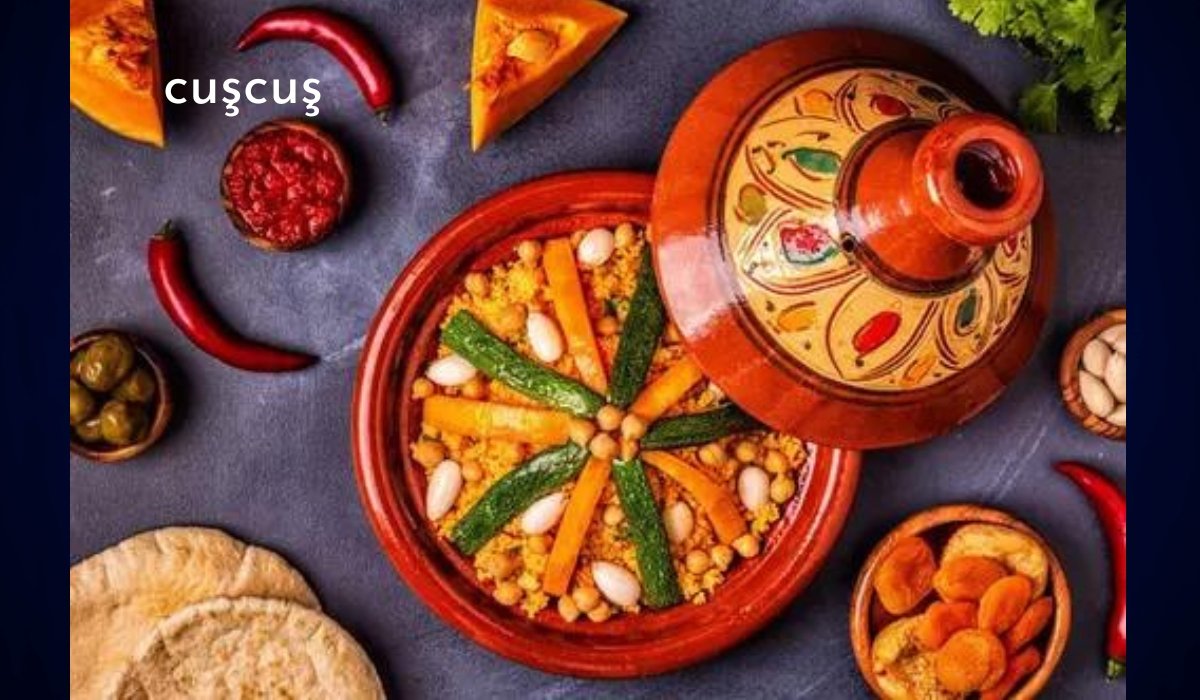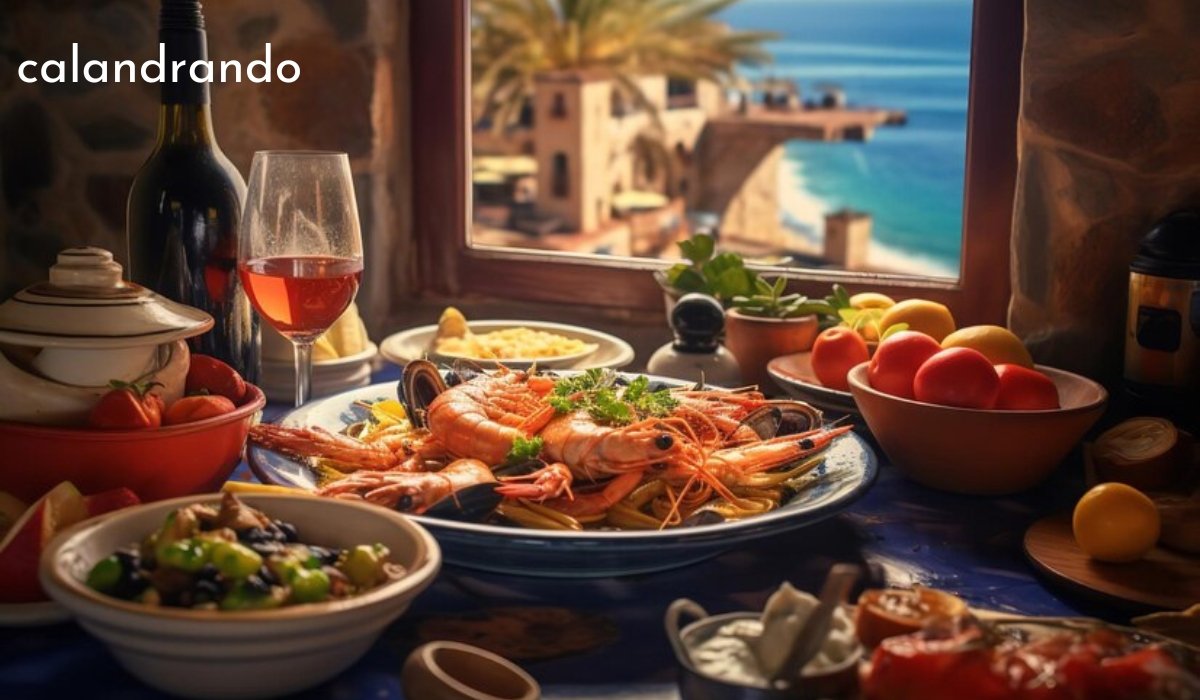Are you looking for a versatile, nutritious, and easy-to-make ingredient to add to your kitchen repertoire? Say hello to cuşcuş! This small, grainy pasta has won hearts worldwide with its simplicity and delightful taste. Whether you’re a food enthusiast or someone keeping an eye on their health, cuşcuş offers something special. In this blog post, we’ll take you on a culinary journey to explore everything you need to know about cuşcuş—from its origins to its health benefits and how you can make it at home.
What is Cuşcuş?
Cuşcuş, often spelled couscous, is a tiny pasta made from crushed durum wheat semolina. It’s incredibly popular in North African cuisine and has found its way into kitchens around the world. Its light, fluffy texture and mild flavor make it a versatile base for many dishes.
Making cuşcuş is simple and quick, which is one of the reasons it’s so beloved. Beyond its ease of preparation, cuşcuş is also packed with nutrients, making it a healthy addition to any meal plan. From salads to main courses, cuşcuş can do it all.
The Origins of Cuşcuş
Cuşcuş has a rich history that dates back to the Berber people of North Africa. Originally, it was a staple in countries like Morocco, Algeria, Tunisia, and Libya. Over time, its popularity spread to the Mediterranean, the Middle East, and even Western countries.
The Berbers were known for their skilled agriculture, and they made cuşcuş from the abundant durum wheat grown in the region. Traditional methods involved painstakingly rolling and steaming the granules, a process that has been refined over centuries.
Today, cuşcuş is a beloved component of many cultural dishes. From Moroccan tagines to Mediterranean salads, it offers a delicious and nutritious foundation that complements a wide range of flavors.
How People Make Cuşcuş
Traditional cuşcuş is made by moistening durum wheat semolina and rolling it into small granules. These are then steamed until they become fluffy and light. The process can be labor-intensive but yields a product with a unique texture.
In modern times, cuşcuş is often pre-steamed and dried, making it quick and easy to prepare. You can find cuşcuş made from other grains as well, including barley, millet, and even corn. This variety allows for different textures and flavors to suit various dietary needs.
The key to perfectly cooked cuşcuş is to ensure that it’s light and fluffy. This is achieved by steaming the grains and then fluffing them with a fork to separate each granule. The result is a versatile dish that can be used as a base for numerous recipes.
What’s in Cuşcuş That’s Good for You
One of the great things about cuşcuş is its nutritional profile. It’s high in carbohydrates, providing a good source of energy. This makes it an excellent choice for athletes or anyone needing a quick energy boost.
Cuşcuş is also rich in fiber, which aids digestion and helps with weight management. Fiber is essential for maintaining a healthy digestive system and can help you feel fuller for longer, reducing the temptation to snack between meals.
In addition, cuşcuş contains essential vitamins and minerals such as B vitamins, selenium, and magnesium. These nutrients are vital for overall health and well-being, supporting everything from energy production to immune function.
How Cuşcuş Compares to Other Grains
When it comes to cooking, cuşcuş has an advantage over other grains like rice and quinoa due to its quick cooking time. While rice and quinoa can take 15-20 minutes to cook, cuşcuş is ready in just about 5 minutes.
The texture of cuşcuş is also unique. It’s light and fluffy, offering a different mouthfeel compared to the chewy texture of quinoa or the starchy consistency of rice. This makes it an exciting alternative for those looking to diversify their meals.
Additionally, cuşcuş has a mild flavor that easily absorbs the flavors of the ingredients it’s cooked with. Whether you’re making a savory stew or a sweet dessert, cuşcuş can adapt and enhance your culinary creations.
Cooking Cuşcuş
Preparing cuşcuş is incredibly simple, which is part of its appeal. All you need is a pot of boiling water or broth. Add the cuşcuş, cover the pot, and let it steam for about 5 minutes. Once it’s done, fluff it with a fork to separate the grains.
For added flavor, you can use vegetable or chicken broth instead of water. This infuses the cuşcuş with a rich taste that elevates any dish. You can also add a touch of olive oil or butter for extra richness.
One of the best things about cuşcuş is its versatility. It can be served hot or cold, as a side dish or a main course. With its quick cooking time and ease of preparation, it’s a convenient option for busy weeknights or elaborate dinner parties.
Spicing Up Your Cuşcuş
To make your cuşcuş even more delicious, consider adding herbs, spices, and other flavorful ingredients. Fresh herbs like parsley, cilantro, and mint add a burst of freshness, while spices like cumin, coriander, and paprika provide warmth and depth.
Vegetables are another great addition. Roasted carrots, bell peppers, and zucchini bring color and nutrition to your dish. Nuts and dried fruits like almonds, apricots, and raisins add a delightful crunch and sweetness.
For a protein boost, toss in chickpeas, grilled chicken, or shrimp. The possibilities are endless, and you can tailor your cuşcuş to suit any taste or dietary preference.
Health Benefits of Cuşcuş
Cuşcuş is not only delicious but also offers numerous health benefits. Its high carbohydrate content provides sustained energy, making it an excellent choice for athletes and active individuals.
The fiber in cuşcuş helps maintain healthy digestion and can aid in weight management by promoting a feeling of fullness. This makes it a valuable addition to any diet, especially for those looking to lose or maintain weight.
Additionally, the vitamins and minerals in cuşcuş support overall health. B vitamins aid in energy production, selenium acts as an antioxidant, and magnesium is crucial for muscle and nerve function. Including cuşcuş in your diet can contribute to a well-balanced, nutrient-rich eating plan.
Cuşcuş in Different Cuisines
Cuşcuş has found its place in various cuisines around the world. In North Africa, it’s often served with stews and tagines, soaking up the rich, flavorful sauces. In the Mediterranean, it’s commonly used in salads with fresh vegetables, herbs, and olive oil.
Middle Eastern cuisine features cuşcuş in dishes like maftoul, a larger-grained version often paired with meat and vegetables. In Western cooking, it’s becoming a popular alternative to rice and pasta, used in everything from side dishes to main courses.
The adaptability of cuşcuş makes it a favorite among chefs and home cooks alike. Its ability to complement a wide range of flavors and ingredients ensures that it remains a versatile and exciting ingredient in the culinary world.
Cuşcuş for Special Diets
For those with dietary restrictions, cuşcuş can be a suitable option. While traditional cuşcuş is made from wheat, gluten-free versions made from corn or rice are available. This allows individuals with gluten intolerance or celiac disease to enjoy cuşcuş without worry.
Vegetarians and vegans can also benefit from cuşcuş. It’s an excellent source of plant-based protein when combined with legumes or nuts. Adding a variety of vegetables and plant-based proteins can create a balanced, nutritious meal.
Even those following a low-carb diet can enjoy cuşcuş in moderation. By pairing it with protein-rich foods and plenty of vegetables, it can fit into a healthy, well-rounded diet.
Cuşcuş Recipes to Try at Home
Ready to get cooking? Here are a few simple cuşcuş recipes to inspire you:
Mediterranean Cuşcuş Salad
Ingredients:
- 1 cup cuşcuş
- 1 1/2 cups vegetable broth
- 1 cup cherry tomatoes, halved
- 1 cucumber, diced
- 1 red bell pepper, chopped
- 1/4 cup red onion, finely chopped
- 1/4 cup fresh parsley, chopped
- 1/4 cup feta cheese, crumbled
- 2 tablespoons olive oil
- 1 tablespoon lemon juice
- Salt and pepper to taste
Instructions:
- Bring the vegetable broth to a boil. Add the cuşcuş, cover, and remove from heat. Let sit for 5 minutes.
- Fluff the cuşcuş with a fork and transfer to a large bowl.
- Add the tomatoes, cucumber, bell pepper, red onion, parsley, and feta cheese.
- Drizzle with olive oil and lemon juice, then toss to combine.
- Season with salt and pepper to taste. Serve chilled or at room temperature.
Spiced Cuşcuş with Vegetables
Ingredients:
- 1 cup cuşcuş
- 1 1/2 cups chicken broth
- 1 tablespoon olive oil
- 1 carrot, diced
- 1 zucchini, diced
- 1 red bell pepper, chopped
- 1 teaspoon ground cumin
- 1/2 teaspoon ground coriander
- 1/4 teaspoon paprika
- Salt and pepper to taste
Instructions:
- Bring the chicken broth to a boil. Add the cuşcuş, cover, and remove from heat. Let sit for 5 minutes.
- Heat the olive oil in a large skillet over medium heat. Add the carrot, zucchini, and bell pepper. Cook until tender, about 5-7 minutes.
- Stir in the cumin, coriander, and paprika. Cook for an additional 2 minutes.
- Fluff the cuşcuş with a fork and add it to the skillet. Toss to combine with the vegetables and spices.
- Season with salt and pepper to taste. Serve warm.
Sweet and Savory Cuşcuş
Ingredients:
- 1 cup cuşcuş
- 1 1/2 cups water
- 1 tablespoon olive oil
- 1/4 cup sliced almonds
- 1/4 cup dried apricots, chopped
- 1/4 cup raisins
- 1 teaspoon ground cinnamon
- 1 tablespoon honey
- Salt to taste
Instructions:
- Bring the water to a boil. Add the cuşcuş, cover, and remove from heat. Let sit for 5 minutes.
- Fluff the cuşcuş with a fork and transfer to a large bowl.
- Heat the olive oil in a small skillet over medium heat. Add the almonds and cook until golden brown, about 3-4 minutes.
- Add the almonds, apricots, raisins, and cinnamon to the cuşcuş. Drizzle with honey and toss to combine.
- Season with salt to taste. Serve warm or at room temperature.
Conclusion
Cuşcuş is more than just a side dish; it’s a versatile, nutritious, and delicious ingredient that can elevate any meal. With its rich history, ease of preparation, and numerous health benefits, it’s no wonder cuşcuş has become a favorite among food enthusiasts and health-conscious individuals alike. Whether you’re new to cuşcuş or a seasoned fan, we hope this guide has inspired you to explore its many possibilities in your kitchen.
Are you ready to take your culinary skills to the next level? Start experimenting with cuşcuş today and discover the endless creative combinations that await you. Happy cooking!
You may also like: Discovering the Delight of Cassasse: A Culinary Journey Through Tradition and Taste










